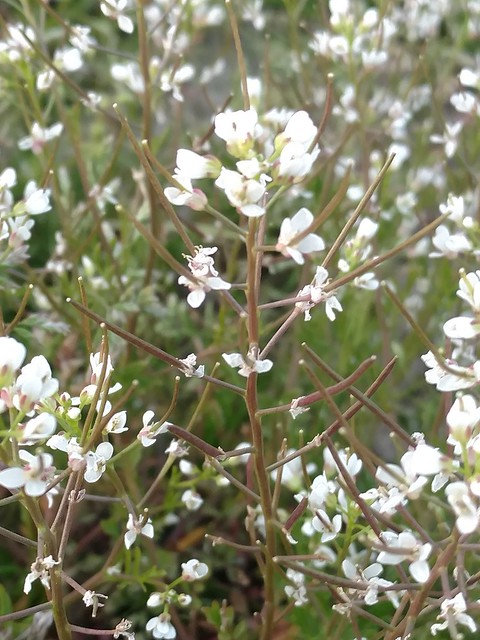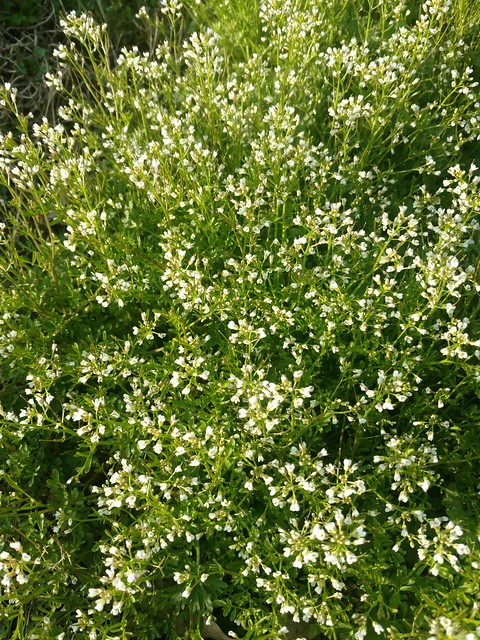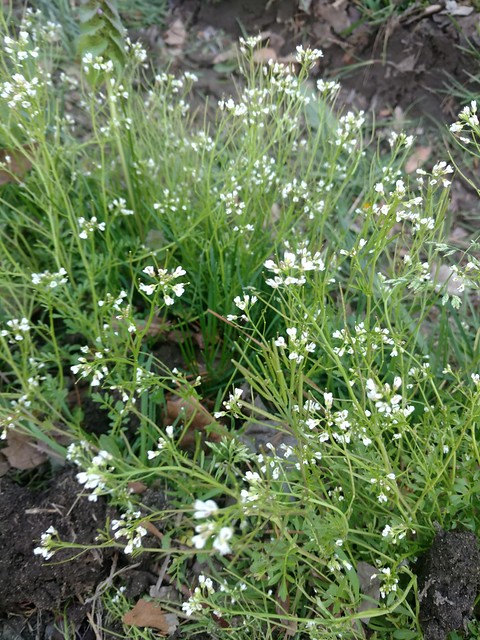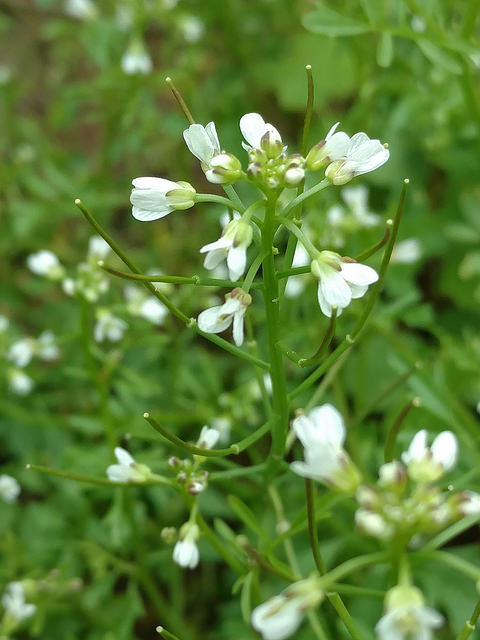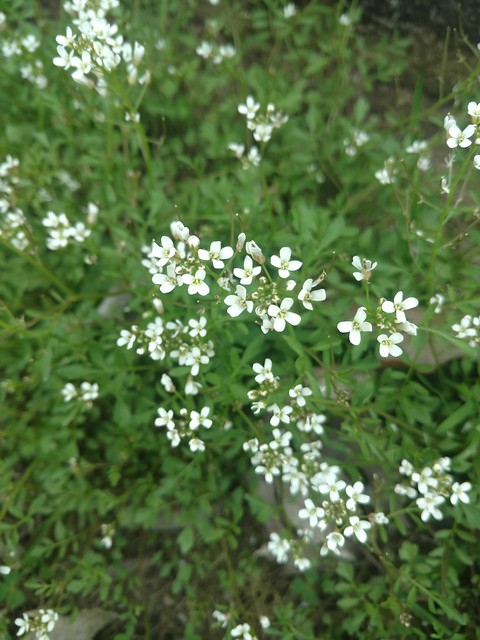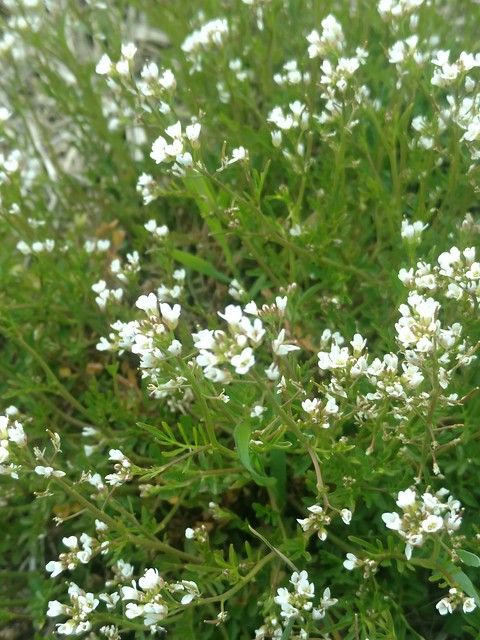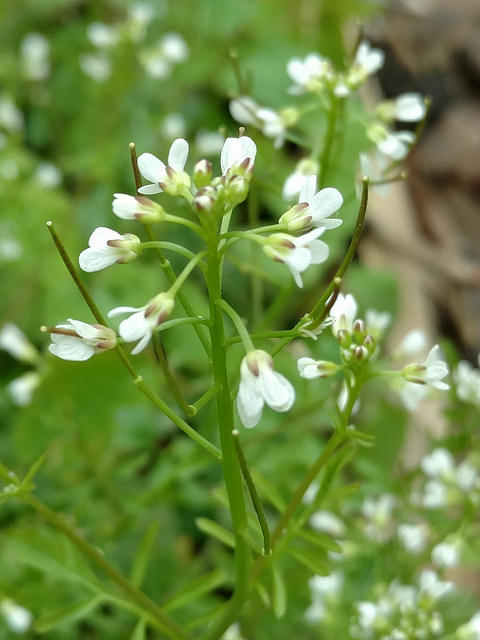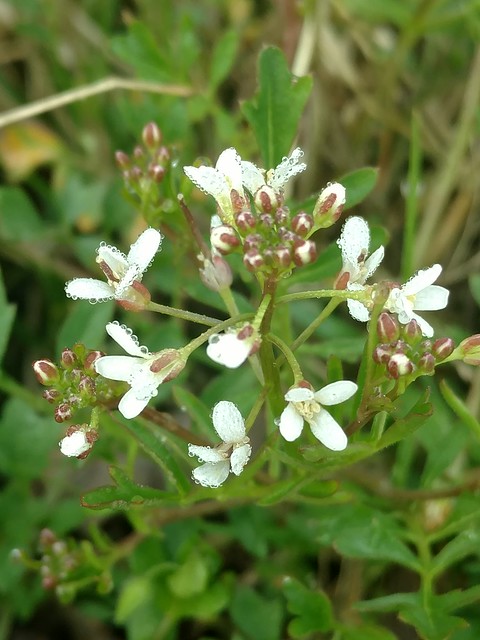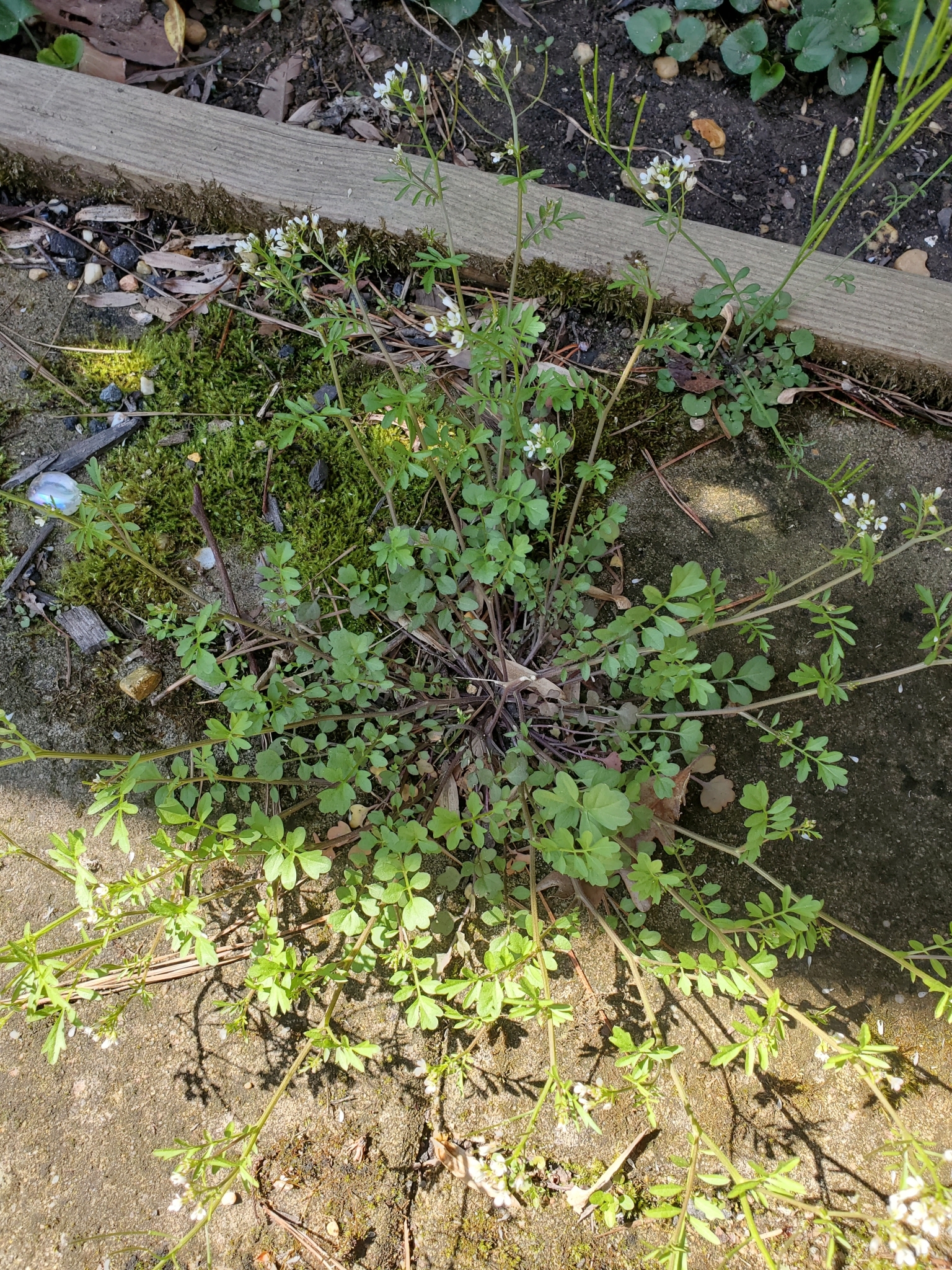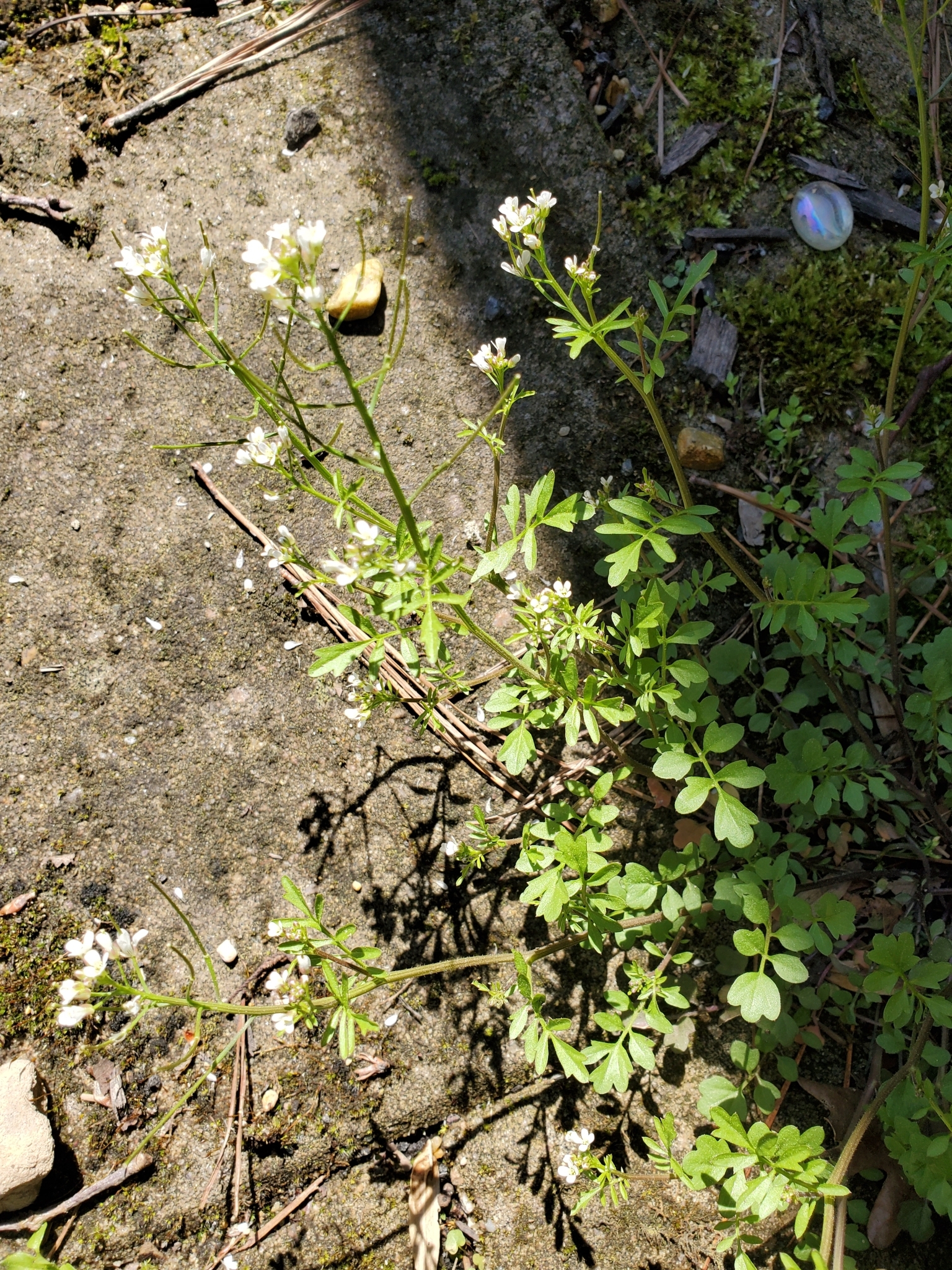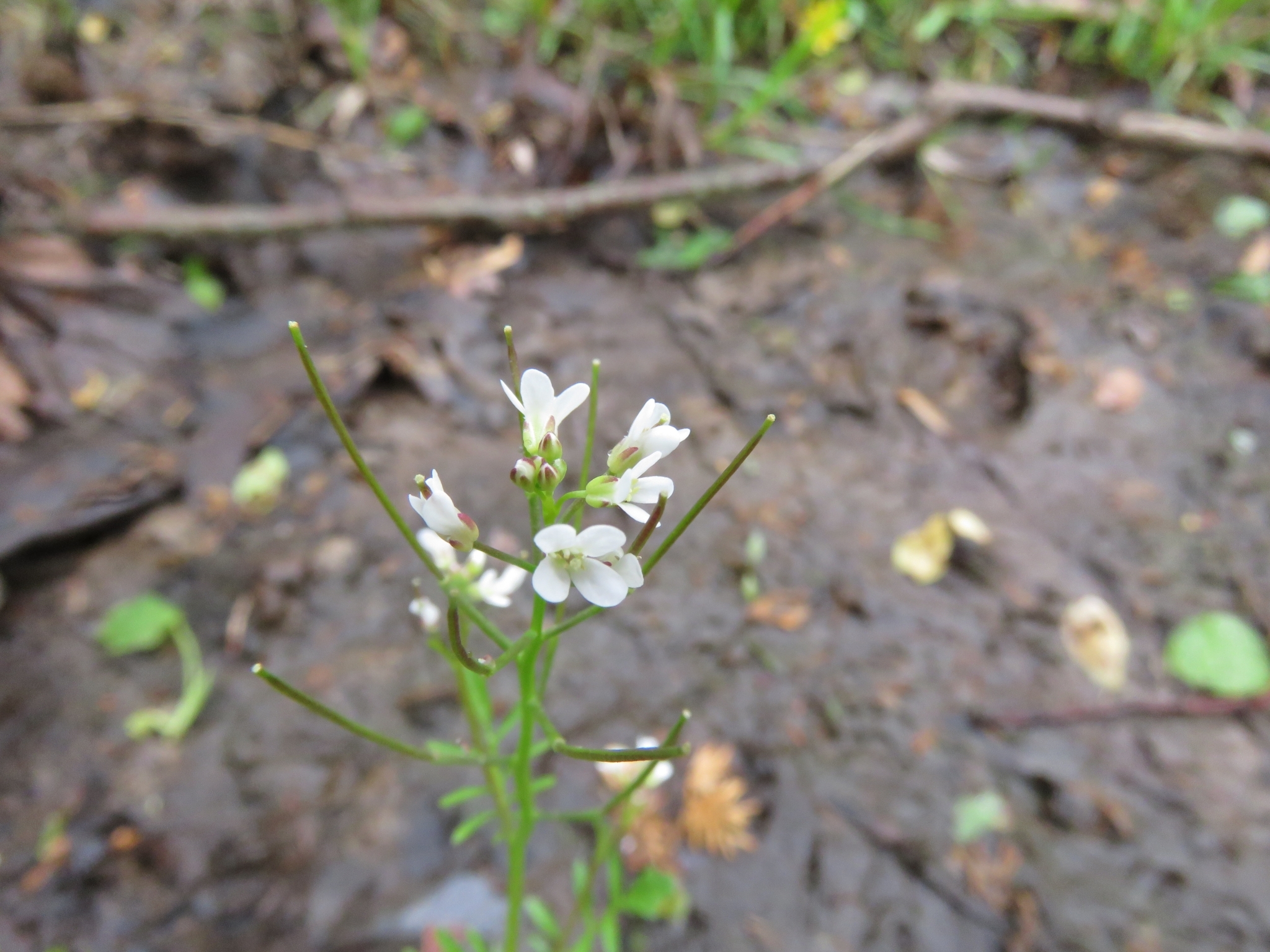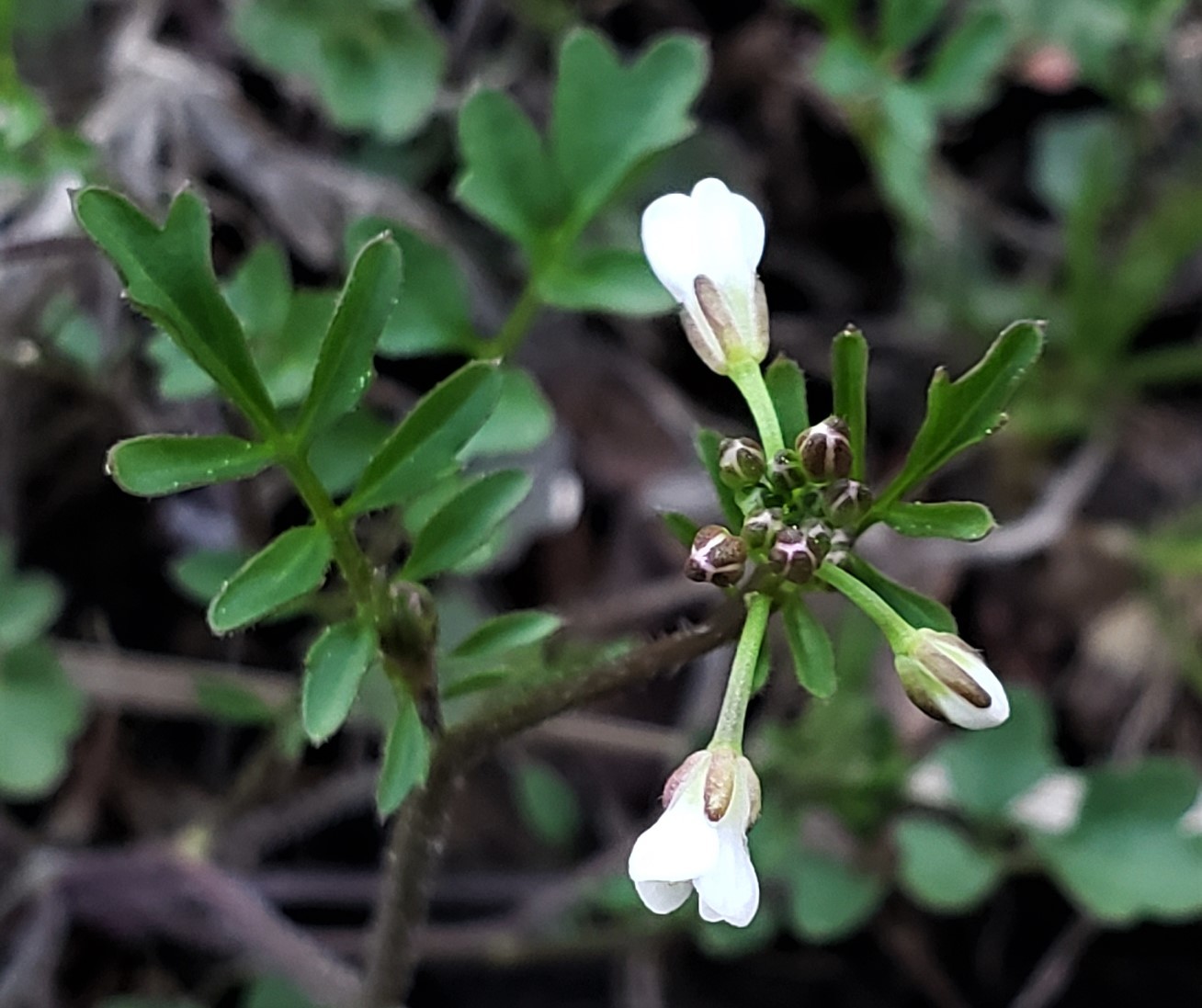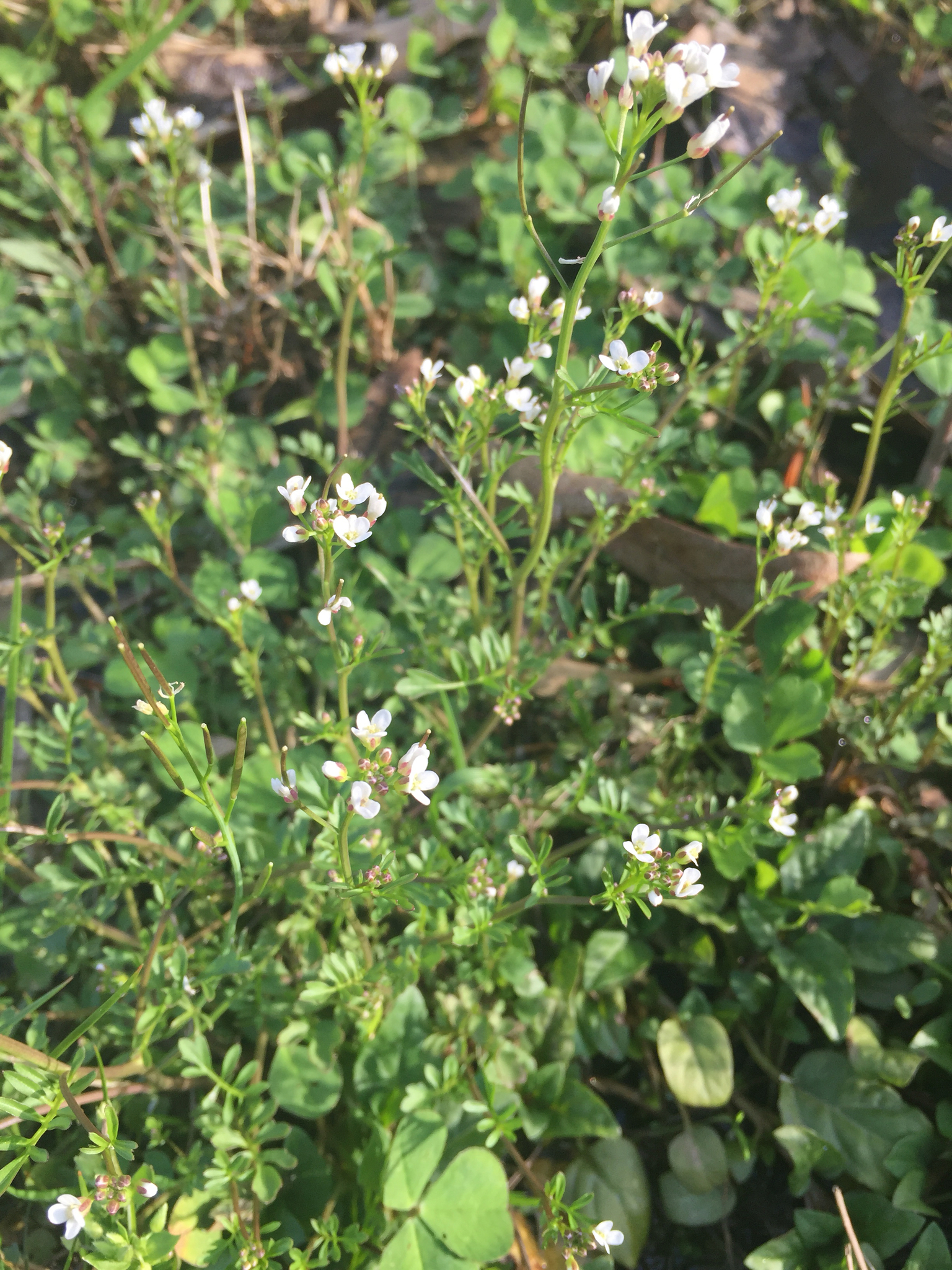Map Snapshot














68 Records
Status
Hidden Bittercress is a non-native mustard from Eastern Asia that has been introduced throughout the eastern United States. In Maryland, it has been found on the Coastal Plain and Piedmont. Hidden Bittercress favors disturbed habitats, often in moist soils, like ditch edges, and low wet areas.This species has often had the European Cardamine flexuosa Withering missapplied, a taxon that now is excluded from the Maryland flora.
Description
Hidden Bittercress can be identified by having compound stem leaves with the terminal leaflets that are broader than the lateral leaflets. The stems are flexuous, which means the stems have a zig-zagging nature, unlike Pensylvania Bittercress that has straight erect stems. Narrowleaf Bittercress also has erect straight stems and acuminate leaflets.
Seasonality Snapshot
Source: Wikipedia
| Cardamine occulta | |
|---|---|

| |
| Inflorescence | |

| |
| Habit | |
| Scientific classification | |
| Kingdom: | Plantae |
| Clade: | Tracheophytes |
| Clade: | Angiosperms |
| Clade: | Eudicots |
| Clade: | Rosids |
| Order: | Brassicales |
| Family: | Brassicaceae |
| Genus: | Cardamine |
| Species: | C. occulta
|
| Binomial name | |
| Cardamine occulta | |
| Synonyms[1] | |
|
List
| |
Cardamine occulta, the hidden bittercress, is a species of flowering plant in the family Brassicaceae, native to the Indian Subcontinent, China, Taiwan, Southeast Asia, most of Malesia, and Japan.[2][1] It has been introduced many locales around the world, including most of Europe, the South Island of New Zealand, central Mexico, Costa Rica, El Salvador, Cuba, the US state of Maryland, and Newfoundland.[1] An annual or biennial, it is typically found in ruderal situations.[2]
References
[edit]- ^ a b c "Cardamine occulta Hornem". Plants of the World Online. Royal Botanic Gardens, Kew. Retrieved 5 May 2024.
- ^ a b Keener, B.R.; Diamond, A.R.; Barger, T.W.; Davenport, L.J.; Davison, P.G.; Ginzbarg, S.L.; Hansen, C.J.; Spaulding, D.D.; Triplett, J.K.; Woods, M. (3 May 2024). "Cardamine occulta". Alabama Plant Atlas. University of South Florida, University of West Alabama. Retrieved 5 May 2024.
